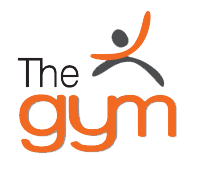Owning and Managing a Gym
Owning and managing a gym is a multifaceted undertaking that combines passion for fitness with
entrepreneurial and managerial acumen. When starting a gym, it's vital to address several key areas
to ensure business success, member satisfaction, and operational efficiency. Here's what you need to
consider:
Membership management
Develop an effective membership management system that makes signing up, renewing, and attending the
gym hassle-free. Offer a variety of membership plans to cater to different client preferences and
maximize retention. Provide minimum commitment periods, family plans, and off-peak memberships to
attract a wider audience. Acquire a gym management software that can easily streamline all these
complex processes to save you time and resources.
Marketing and sales
A strong marketing plan, including both online and offline strategies, is key to attracting new
members. Utilize social media, local advertising, and community events to promote your gym. Referral
programs and partnerships with local businesses can also be great growth avenues.
Member-centered approach
Taking a member-centered approach in all aspects of management will foster loyalty and referrals.
This includes soliciting feedback, responding to concerns swiftly, and evolving services to meet
member needs. Offer classes, workshops, and personalized fitness plans to provide value beyond the
gym floor.
Technology integration
Incorporating technology, such as a gym management software, can streamline operations from class
scheduling to billing. Offer a mobile app for members to track workouts, book classes, and manage
their accounts, enhancing their engagement with your gym.
Adaptive strategies
Stay adaptive to changes in fitness trends, member preferences, and the competitive landscape. This
might involve periodically updating your equipment, offering new classes, or renovating your gym to
stay fresh and relevant.
Owning and managing a gym takes dedication beyond a love for fitness. By focusing on meticulous
planning, quality service, financial diligence, and a strong customer focus, you can create a gym
that stands out in a crowded marketplace and generates a loyal member base. Always be prepared to
evolve and innovate in response to industry challenges and opportunities.
Gym Maintenance and Upkeep
When opening a gym, establishing and maintaining a rigorous program for gym maintenance and upkeep is
essential. A clean, safe, and well-functioning facility not only ensures compliance with health
standards and reduces the risk of accidents but also significantly contributes to member
satisfaction and retention.
Here’s a comprehensive guide to effective gym maintenance and upkeep.
Daily cleaning routines
Implement a daily cleaning schedule to maintain hygiene in all areas of the gym, including workout
areas, locker rooms, and restrooms. High-touch surfaces such as equipment controls, door handles,
and lockers should be sanitized frequently.
Given the heavy foot traffic and workout intensity, floors should be cleaned daily. Use appropriate
cleaning agents and methods for different types of flooring materials to prevent damage.
Equipment maintenance
-
Regular Inspections. Conduct routine inspections to check for wear and tear, noting any
damages that require immediate attention. This includes checking cables, belts, pulleys on
weight machines, and calibration on cardiovascular equipment.
-
Preventative Maintenance. Develop a preventative maintenance schedule for all equipment,
following the manufacturer’s recommendations to prolong lifespan and ensure safety.
-
Cleaning Equipment. Beyond structural maintenance, equipment must be cleaned regularly to
prevent the buildup of sweat, dust, and grime, which can degrade materials and cause
malfunction.
Facility maintenance
Regularly inspect the facility’s infrastructure - including lighting, HVAC systems, plumbing, and
electrical systems to ensure everything operates efficiently and safely. Moreover, maintaining the
aesthetic appeal of your gym is vital for attracting and keeping members. This includes paint
touch-ups, fixing broken fixtures, and updating signs as needed.
Safety measures
Regular checks on fire extinguishers, first aid kits, and other emergency equipment are crucial to
ensure they are in perfect working order. Keep all safety signs visible and legible, including
instructions for equipment use and emergency exits.
Air quality and ventilation
A proper ventilation system is key to ensuring good air quality, controlling odors, and providing a
comfortable environment for workouts. Regular servicing of HVAC systems is necessary. Consider
adding air purifiers as well to further enhance air quality, especially in enclosed or high-traffic
areas.
An effective gym maintenance and upkeep program is a critical facet of managing a successful gym.
Through diligent planning, regular care, and attention to member feedback, you can ensure a safe,
clean, and inviting environment that members enjoy and appreciate. This not only safeguards the
physical investment in your gym but also builds a strong, engaged community around your brand.
Gym Membership Management
Successful gym membership management is a cornerstone of a thriving fitness business. When opening a
gym, how you handle memberships can significantly impact your revenue and member
satisfaction.
The goal is to create a seamless experience for members from sign-up through their entire fitness
journey, while efficiently managing the business side of operations. Here’s how to approach
membership management for optimal results.
Develop a comprehensive membership system
A robust membership management system should be at the heart of your operations. This system can
handle various functions such as sign-ups, renewals, cancellations, billing, and attendance
tracking.
Today, many gyms leverage software solutions that offer both administrative efficiency and enhanced
member experiences. Choose a gym
automation system that is intuitive, scalable, and integrates well with other tools such as
scheduling software or your accounting system.
Offer a range of membership options
Diversify your membership plans to cater to different needs and preferences. This could
include:
-
Single, Couple, and Family plans: To accommodate different social groups.
-
Tiered memberships: Offering varying levels of access, such as off-peak times at a lower
rate.
-
Corporate memberships: Partnering with local businesses to offer their employees discounted
rates.
-
Short-term memberships: For those who are in town temporarily or want to try the gym before
committing.
Implement a smooth onboarding process
First impressions matter. A smooth onboarding process for new members can set the tone for a
positive long-term relationship. This process should include:
-
A guided tour of the facilities.
-
An introduction to gym staff and trainers.
-
Information on how to book classes and use equipment.
-
A discussion on fitness goals and how your gym can help achieve them.
Engage and retain members
Engagement and retention are critical in membership management. Effective strategies include:
-
Personalization. Tailor communication and offers based on members’ interests and activities.
-
Feedback Loops. Regularly solicit and act on member feedback to improve your services.
-
Community Building. Foster a sense of community through social events, challenges, and clubs
within the gym.
-
Rewards and Incentives. Implement a loyalty program or offer incentives for referrals,
milestones, or renewals.
Leverage technology for convenience and engagement
Technological tools can greatly enhance the membership experience by offering convenience and
fostering engagement. Here are some tools that should help elevate your gym business:
-
Mobile App. A gym app where members can book classes, track workouts, and manage their
accounts.
-
Online Resources. Offering online training programs, nutritional guidance, and fitness
tracking to support members outside the gym.
-
Communication Channels. Utilize email, SMS, or social media to keep in touch with members,
share updates, and promote events.
What’s even better? You can easily streamline all these in one gym software that has the capability
to integrate different technological tools with the push of a button. Don’t sleep on technology—even
more so if your target market are the younger ones!
Effective financial management
Efficiently managing the financial aspects of memberships is vital for the gym’s sustainability.
Ensure accurate billing, timely collections, and the ability to easily adjust membership plans.
Clear communication about fees, increases, and cancellation policies helps maintain trust and
transparency.
Measure and adapt
Regularly review membership metrics such as acquisition rates, churn rates, and engagement levels to
gauge the health of your membership base. Use these insights to adapt your strategies, improve the
member experience, and grow your business.
Effective membership management is more than just transactions; it’s about cultivating relationships
and creating value for your members. By adopting a member-centric approach, leveraging technology,
and continuously seeking to improve, you can build a loyal membership base that supports the success
and growth of your gym.
Creating Fitness Goals for Your Members
Setting fitness goals for your members can be a game-changer when opening a gym. A pathway defined by
achievable targets gives gym-goers a sense of direction, motivation, and makes measurable success
possible. Below are strategies for creating fitness goals for your members, fully immersing them
into a results-oriented training climate.
Understanding your members
Before you can effectively establish fitness goals, it's crucial to understand your members, their
needs, and preferences. You can achieve this understanding through questionnaires, consultation
sessions, or simply through casual conversations.
Ask about their current fitness level, the activities they enjoy, their past experiences with
fitness, and their expectations moving forward. This way, you can personalize goals that resonate
with them, significantly boosting motivation and commitment.
SMART goals
Fitness goals should be SMART—Specific, Measurable, Achievable, Relevant, and Time-bound.
Specifying what they want to achieve (e.g., lose weight, increase muscle mass, run a marathon), how
it will be measured, ensuring it is attainable and relevant to the individual, and setting a
timeline for accomplishment, will give your members clear and reachable targets.
Create micro and macro goals
Breaking down major targets into micro-goals makes fitness objectives appear less daunting and more
attainable.
For instance, a member who wishes to lose 20 pounds might become overwhelmed and discouraged if they
don't see immediate results. However, if you break this down into smaller goals—perhaps losing two
pounds every two weeks—the mission seems much more feasible, and the member will enjoy a sense of
accomplishment along the way.
Utilize fitness assessments
Fitness assessments are an effective way of establishing personalized starting points at your gym.
Conduct various assessments, such as body composition, strength, flexibility, and endurance tests,
to get an accurate picture of each member's fitness level.
These assessments will not only help in setting initial goals but also serve as benchmarks to measure
progress over time.
Establish a goal-tracking system
Once the goals are set, implement a system to monitor progress. This can be as simple as a personal
training log or as high-tech as a mobile app through a gym management software. Make sure to
regularly review these goals, adjust as necessary, and celebrate milestones. This promotes
accountability and provides opportunities for motivation and positive reinforcement.
Creating a supportive environment
An encouraging atmosphere is crucial in helping members achieve their goals. Foster a supportive
community where everyone feels comfortable and excited to pursue their targets. Regularly host
workshops or group activities focusing on goal-setting strategies and share success stories to
inspire others.
Creating fitness goals for your members is more than just setting targets. It's about shaping a
positive experience at your gym, where members feel understood, supported, and motivated to make
consistent progress. Establishing well-thought-out, personalized goals will provide direction and
purpose to your members' gym activities, fostering an environment where members are excited to grow
and succeed.
Effective Marketing Strategies for a Gym
In the competitive fitness industry, the right marketing strategies can set your gym apart, attract
new members, and retain existing ones. Effective marketing is about understanding your audience,
leveraging your unique selling proposition, and communicating value in creative and engaging
ways.
Here are several effective marketing strategies to help your gym stand out:
Define your Unique Selling Proposition (USP)
Unique selling proposition, or USP, is what sets you apart from competitors. Identify what makes your
gym different and better than other enterprises. This could be your cutting-edge equipment,
specialized classes, expert trainers, or community atmosphere. Your USP should be the foundation of
your marketing materials.
Optimize your website
Your website is often the first impression potential members have of your gym. Ensure that your
business website exhibits the following:
-
Visually appealing and reflects your brand.
-
Easy to navigate with clear calls to action (CTA), such as joining, booking a trial, or
contacting you.
-
Includes member testimonials, trainer bios, and high-quality photos of your facilities.
-
Optimized for search engines (SEO) with relevant keywords so potential members can find you
easily.
Leverage social media
Social media platforms are powerful tools for connecting with potential and current members. Use them
to:
-
Share engaging content such as workout tips, success stories, and behind-the-scenes looks at
gym life.
-
Create and promote events or
challenges that encourage participation and sharing.
-
Engage with followers by responding to comments, asking for input, and running polls or
Q&A sessions.
Implement a referral program
Word-of-mouth is incredibly powerful in the fitness industry. Encourage your satisfied members to
refer friends and family by offering incentives, such as a free month, discounts, or merchandise for
every new member they bring in.
Offer free trials or classes
Free trials allow potential members to experience your gym without committing upfront. This can be a
powerful way to get people through the door, with the goal of converting them into full members
after they've experienced what makes your gym excellent.
Host events and workshops
Events and workshops can draw attention to your gym and offer value beyond regular workouts. Consider
hosting fitness challenges, nutritional seminars, open houses, or charity events. These can also
provide great content for your marketing channels.
Partner with local businesses, sports clubs, or wellness brands to introduce your gym to their
customers. Sponsorship of local events or teams can also increase your visibility within the
community and establish your gym as a key player in the local fitness scene.
Use targeted advertising
Paid advertising on platforms like Google AdWords and Facebook can be effective if well-targeted. Use
demographic and psychographic information to reach potential members who fit your target market,
focusing on the unique benefits your gym offers.
Marketing a gym effectively requires a deep understanding of your target audience and a creative
approach to communicating your value proposition. By combining multiple strategies and continuously
analyzing the performance of your efforts, you can build a strong brand presence that attracts and
retains members.
Remember, the best marketing is also about delivering exceptional service—when members love your gym,
they’ll do some of the marketing for you by spreading the word.
Gym Training and Management
Running a successful gym involves more than just top-notch equipment and appealing services; it
requires a dedicated and well-trained team that understands the core values of your business and is
equipped with the skills to deliver exceptional service.
Effective gym employee training and management not only enhance the operational efficiency of a gym
but also significantly improve the member experience. Here are key strategies for effective gym
employee training and management:
Hiring the right team
Start by hiring individuals who not only have the necessary certifications and experience but also
align with your gym's culture and values. Look for passion, commitment to fitness, and the ability
to communicate effectively and empathetically with members.
Onboarding process
An organized and comprehensive onboarding process is crucial. New hires should understand their
roles, responsibilities, and the expectations of them.
Include a detailed tour of the facility, introductions to team members, and an overview of gym
operations, policies, and culture. Ensure they are familiar with emergency procedures, equipment
maintenance, and cleanliness standards.
Ongoing training and development
Continuous professional development keeps your team motivated, knowledgeable, and engaged. Offer
opportunities for further education, such as certifications in personal training, group fitness
instruction, or specialized fitness domains. Invest in training that enhances soft skills like
communication, customer service, and sales, as these directly impact member satisfaction and
retention.
Performance evaluation
Regular performance evaluations help staff understand how they’re doing and where they can improve.
Use these sessions to set individual goals, offer constructive feedback, and discuss career
advancement opportunities. Recognizing and rewarding achievements and contributions also boosts
morale and loyalty.
Effective communication
Maintain open lines of communication with your team. Encourage feedback and suggestions regarding gym
operations and member services. Regular meetings, whether as a whole staff or in departments, ensure
everyone is aligned with the gym’s objectives and allows for sharing updates and resolving issues
collaboratively.
Creating a positive work environment
A positive and inclusive work environment fosters team unity and job satisfaction. Promote teamwork
through team-building activities, celebrate milestones and achievements, and support work-life
balance. When your employees feel valued and supported, they are more likely to deliver superior
service to your members.
Empower your team by delegating responsibilities and allowing space for autonomy in their roles. When
employees feel their contributions matter, they are more motivated and invested in the gym's
success. However, clear accountability structures should also be in place to ensure that standards
are met and maintained.
Knowledge of health and safety regulations
Ensure all staff are trained and up-to-date on health and safety regulations relevant to your gym.
Regular drills on emergency responses, first aid certification, and knowledge of how to use safety
equipment are critical for fostering a safe environment for both members and staff.
Investing in your gym's staff through comprehensive training and effective management practices is
crucial for the success and growth of your fitness business. A well-trained, motivated, and happy
team will not only improve the operational effectiveness of your gym but also create a welcoming and
supportive environment that encourages member loyalty and satisfaction.















